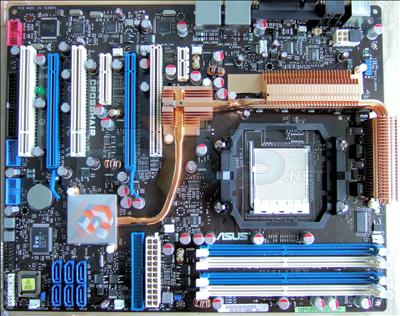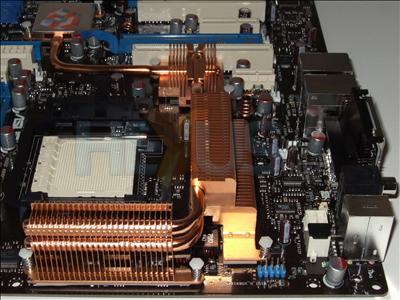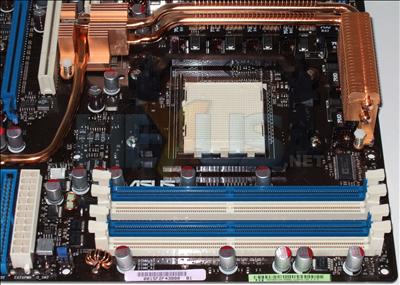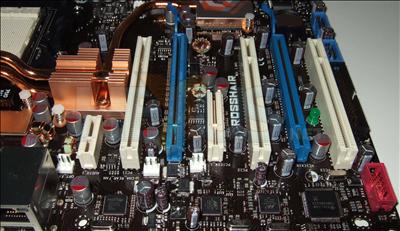CROSSHAIR board inspection
One down, one to go. Introducing the CROSSHAIR.
It may well have the same chipset as the M2N32-SLI Deluxe, but the board layout is quite different. A few ideas persist, like the passive chipset/VRM cooling, albeit about a different Socket AM2 orientation.
Once again, hefty sinks make use of air coming from the CPU HSF. An all copper design adds weight, but increases cooling performance. In a better location than on the M2N32-SLI Deluxe is the +12V power connector, which is of the extended 8-pin type, should the system's power supply have such a connector. If it doesn't, then a 4-pin +12V connector should suffice.
Each DIMM socket can hold a 2GiB DDR2 memory module for a total of8GiB system memory. We doubt many of these boards will ever see that much RAM, but in a year or so the story could be different.
The SATA ports are positioned such that even a pair of GeForce 7950 GX2s won't interfere with them. The ATX power and IDE connectors are oriented awkwardly, but it's probably the best use of the available space, we feel.
The leftmost PCIe x1 connector isn't actually a PCIe connector at all. That's where the sound daughter-board fits. With two dual-slot PEG cards installed, two PCI slots are useable, but not the PCIe x4 connector. The PCIe x4 connector is open ended, meaning that a wider card could, in theory, by installed into it and operate properly, albeit with fewer available lanes than intended.
So, CROSSHAIR has a better layout than the M2N32-SLI Deluxe, but it gets better still...
In the dark, CROSSHAIR comes to life with millions upon millions (ish) of bright blue LEDs. Their purpose is twofold. With the system plugged in but turned off, they can be powered from the PSU's 5V standby supply, meaning upgrades can be performed in low-light much easier, which saves the effort required in lugging the PC onto a worktop in a well lit area. Well, it would save the effort if they provided enough light, but they don't. Secondly, it's a bit of a willy waving exercise, for those who enjoy lots of zOMG LEDs.
The LEDs can be enabled when the system is off, via a button on the board's backplane. They must be turned off to subsequently boot the system, however; something that isn't immediately obvious. A warning sticker would fix that. With the system on, the LEDs can be enabled in the BIOS, however we reckon their life span will be in the region of 1000 hours, based on the expected life of many ultra-bright LEDs.

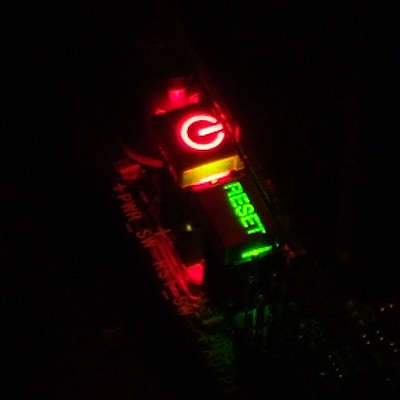
The board has onboard buttons for clearing the CMOS, power and reset, which isn't new, but the back-lighting on them is. This is probably more useful than the swathe of blue LEDs, in our opinion.
So, the CROSSHAIR is a board with a bit of bling to it, but even if you don't like that, most of it can be turned off, leaving a well laid out enthusiast piece of hardware.






